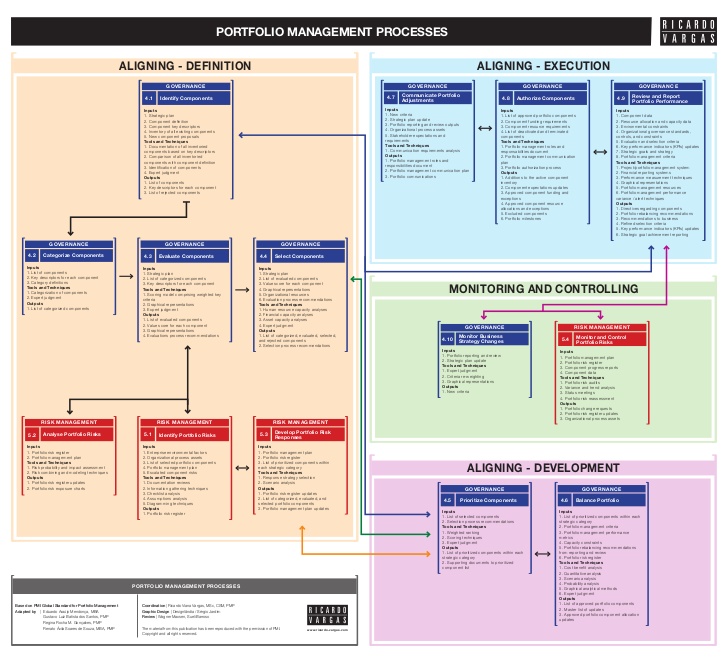

Unusually, this decision was made without consulting members of the international monetary system or even his own State Department, and was soon dubbed the Nixon Shock. Despite the economic cost implied by such a policy, being at the center of the international market gave the U.S. unprecedented freedom of action in pursuing its foreign affairs goals. A trade surplus made it easier to keep armies abroad and to invest outside the U.S., and because other nations could not sustain foreign deployments, the U.S. had the power to decide why, when and how to intervene in global crises. The dollar continued to function as a compass to guide the health of the world economy, and exporting to the U.S. became the primary economic goal of developing or redeveloping economies.
The economic hardship of the war period forced the people of British colonies against them. While Britain was preoccupied with war, industries had development in Japan and India. So now Britain had to face competition from these countries, especially from Japan.
Aid to Europe and Japan was designed to rebuild productivity and export capacity. In the long run it was expected that such European and Japanese recovery would benefit the United States by widening markets for U.S. exports, and providing locations for U.S. capital expansion. Members were required to pay back debts within a period of 18 months to five years. In turn, the IMF embarked on setting up rules and procedures to keep a country from going too deeply into debt year after year. The Fund would exercise “surveillance” over other economies for the U.S.

Under the agreement, each participating country pegged its currency to gold and established a maximum allowed deviation from that peg. The Bretton Woods Agreement remained in effect until 1971 when the United States began to allow its currency to float on foreign exchange markets. The agreement was signed by representatives of 44 nations and established the International Monetary Fund and the World Bank. The deal was designed to stabilize currencies and promote international trade after World War II.
The Bretton Woods System’s Collapse
Over the course of the crisis, the IMF progressively relaxed its stance on “free-market” principles such as its guidance against using capital controls. In 2011, the IMF’s managing director Dominique Strauss-Kahn stated that boosting employment and equity “must be placed at the heart” of the IMF’s policy agenda. The World Bank indicated a switch towards greater emphases on job creation.
Prosperity in the USA during the 1920s created a cycle of higher employment and incomes. More investment and more employment created tendencies of speculations which led to the Great Depression of 1929 upto the mid-1930s. Thousands of men and women, who were thrown out of work, migrated to town and cities. This indirectly led to global agriculture and rapid urbanisation, a prerequisite of industrial growth.
- In other words, the United States would have to reverse the imbalances in global wealth by running a balance of trade deficit, financed by an outflow of U.S. reserves to other nations (a U.S. financial account deficit).
- Bretton Woods established a system of payments based on the dollar, which defined all currencies in relation to the dollar, itself convertible into gold, and above all, “as good as gold” for trade.
- Industrial production registered a fail of about 35 per cent.
- Any country experiencing inflation would lose gold and therefore would have a decrease in the amount of money available to spend.
This arrangement came to be referred to as the Pax Americana, in analogy to the Pax Britannica of the late 19th century and the Pax Romana of the first. The IBRD had an authorized capitalization of $10 billion and was expected to make loans of its own funds to underwrite private loans and to issue securities to raise new funds to make possible a speedy postwar recovery. The IBRD was to be a specialized agency of the United Nations, charged with making loans for economic development purposes. Imbalances in international trade were theoretically rectified automatically by the gold standard. A country with a deficit would have depleted gold reserves and would thus have to reduce its money supply. The resulting fall in demand would reduce imports and the lowering of prices would boost exports; thus the deficit would be rectified.
When was the Bretton Woods Agreement?
The modest credit facilities of the IMF were clearly insufficient to deal with Western Europe’s huge balance of payments deficits. Only the United States contribution of $570 million was actually available for IBRD lending. In addition, because the only available market for IBRD bonds was the conservative Wall Street banking market, the IBRD was forced to adopt a conservative bretton woods agreement class 10 lending policy, granting loans only when repayment was assured. Given these problems, by 1947 the IMF and the IBRD themselves were admitting that they could not deal with the international monetary system’s economic problems. After the Bretton Woods system ended in 1973, most countries allowed their currencies to float, but this situation soon changed.
This bank would issue a new international currency, the “bancor,” which would be used to settle international imbalances. Keynes proposed raising funds of $26 million for the Clearing Union. The plan reflected Keynes’s concerns about the global postwar economy. He assumed the United States would experience another depression, causing other countries to run a balance-of-payments deficit and forcing them to choose between domestic stability and exchange rate stability. Established in 1944 and named after the New Hampshire town where the agreements were drawn up, the Bretton Woods system created an international basis for exchanging one currency for another.

The exchange rates were fixed, with the provision of changing them if necessary. Facing the Soviet Union, whose power had also strengthened and whose territorial influence had expanded, the U.S. assumed the role of leader of the capitalist camp. The IMF is provided with a fund composed of contributions from member countries in gold and their own currencies. When joining the IMF, members are assigned “quotas” that reflect their relative economic power—and, as a sort of credit deposit, are obliged to pay a “subscription” of an amount commensurate with the quota. They pay the subscription as 25% in gold or currency convertible into gold and 75% in their own currency.
Instead, governments would closely police the production of their currencies and ensure that they would not artificially manipulate their price levels. If anything, Bretton Woods was a return to a time devoid of increased governmental intervention in economies and currency systems. The system depleted US gold reserves—as more and more US dollars were issued to meet international demand.
What was the main goal of the Bretton Woods Agreement?
In the past this problem had been solved through the gold standard, but the architects of Bretton Woods did not consider this option feasible for the postwar political economy. Instead, they set up a system of fixed exchange rates managed by a series of newly created international institutions using the U.S. dollar as a reserve currency. The Articles represented a compromise between the American plan of Harry Dexter White and the British plan of John Maynard Keynes. The compromise created an adjustable peg system based on the US dollar convertible into gold at $35 per ounce along with capital controls.
The inflow of dollars into foreign banks continued the monetization of the dollar overseas, defeating the aims of the Smithsonian Agreement. As a result, the dollar price in the gold free market continued to cause pressure on its official rate; soon after a 10% devaluation was announced in February 1973, Japan and the EEC countries decided to let their currencies float. This proved to be the beginning of the collapse of the Bretton Woods System.
These organizations hold great significance on the global front—they facilitate international trade and finance nations. The planners at Bretton Woods set up a system of rules, institutions, and procedures to regulate the international monetary system. They started the International Bank for Reconstruction and Development and the International Monetary Fund . From 1944 until 1971, all major world currencies were pegged to the dollar, while the dollar itself was pegged to gold, a relationship popularly known as “the Gold Standard.” Rinderpest, a fast-spreading disease of cattle plague, was brought to Africa by Europeans in late 1880s. Entering Africa in the east, rinderpest moved west ‘like forest fire’ destroying almost 90 per cent of African cattle.
The architects of Bretton Woods had conceived of a system wherein exchange rate stability was a prime goal. Yet, in an era of more activist economic policy, governments did not seriously consider permanently fixed rates on the model of the classical gold standard of the 19th century. Gold production was not even sufficient to meet the demands of growing international trade and investment.
The Caribbean islands , Mauritius, and Fiji were the main destinations of Indian indentured migrants. Most of these indentured labourers migrated in hope for a bright future or to escape poverty or oppression in their home village, but they were exploited by the recruiting agent and by the employer. Give two examples from history to show the impact of technology on food availability. The famous economist John Maynard Keynes thought that Indian gold exports promoted global economic recovery. Through this letter, I want to tell you about my work life and hardships.
The Impact of Great Depression on Indian economy
Industrial production registered a fail of about 35 per cent. They started creating their own way of enjoyment like Chutney Music. The Chutney Music has beer, created by Indo- Caribbean people. Most of the indentured workers migrated in hope for a bright future, but they were exploited by the recruiting agent and by the employer. After the abolition of Corn Laws, food could be imported into Britain more cheaply than it could be produced within the country. The scrapping of Corn Laws lead to free trade of food grains.
Major consequences of the Second World War:
Negotiators at the Bretton Woods conference, fresh from what they perceived as a disastrous experience with floating rates in the 1930s, concluded that major monetary fluctuations could stall the free flow of trade. Yet U.S. officials were determined to open their access to the British empire. The combined value of British and U.S. trade was well over half of all the world’s trade in goods. For the U.S. to open global markets, it first had to split the British empire. While Britain had economically dominated the 19th century, U.S. officials intended the second half of the 20th to be under U.S. hegemony.
A super currency would replace the U.S. dollar as the world’s reserve currency and form the basis for a new global monetary system. These countries were brought together to help regulate and promote international trade across borders. As with the benefits of all currency pegging regimes, currency pegs are expected to provide currency stabilization for trade of goods and services as well as financing. The Bretton Woods Twins — the IMF and the World Bank were dominated by the former colonial powers As a result, most developing countries did not benefit from the fast growth that the western economies experienced in die 1950s and 1960s. They organised themselves as a croup — the group of 77 of G-77 to demand a new International economic order. Agricultural overproduction was one another major factor responsible for the depression.




